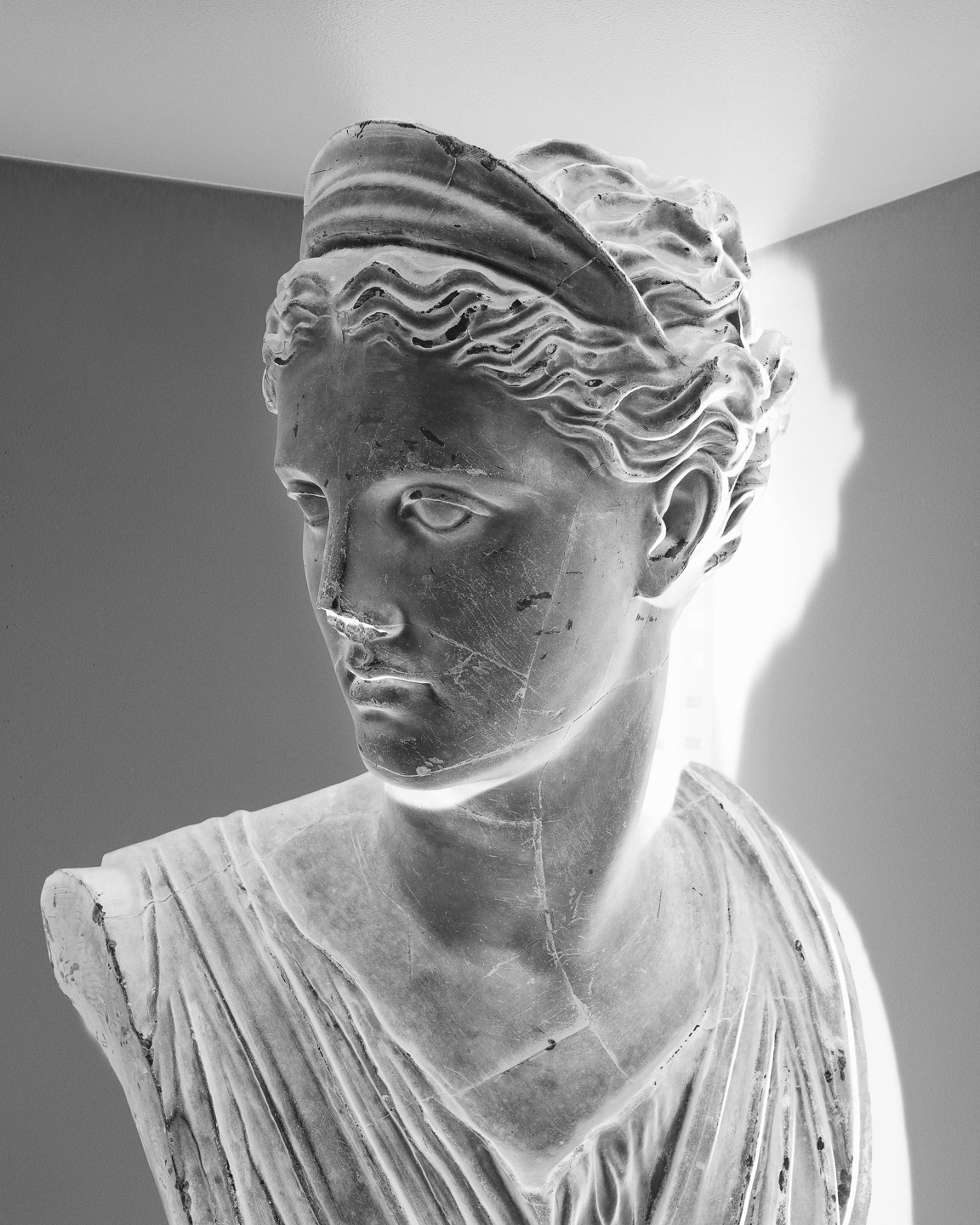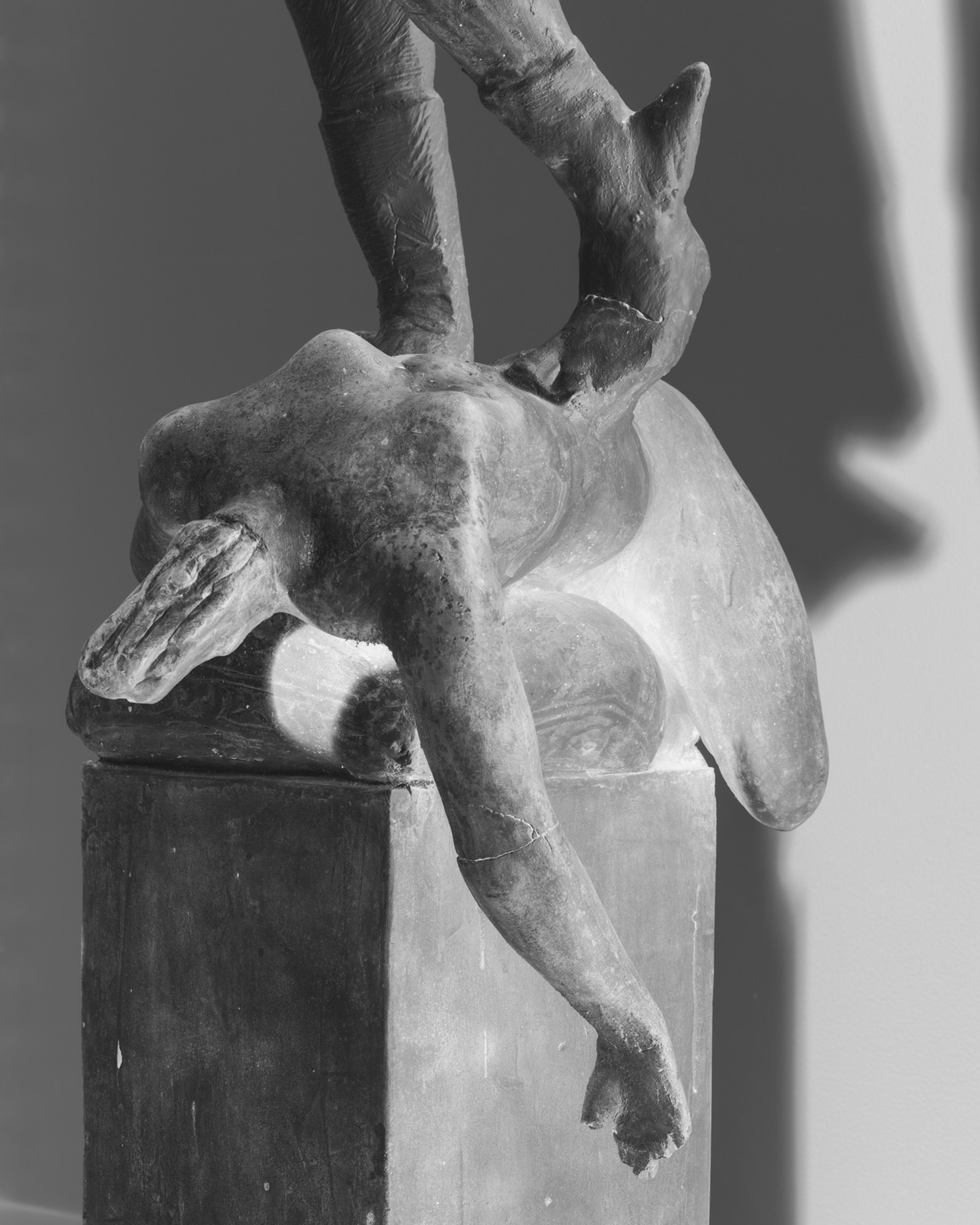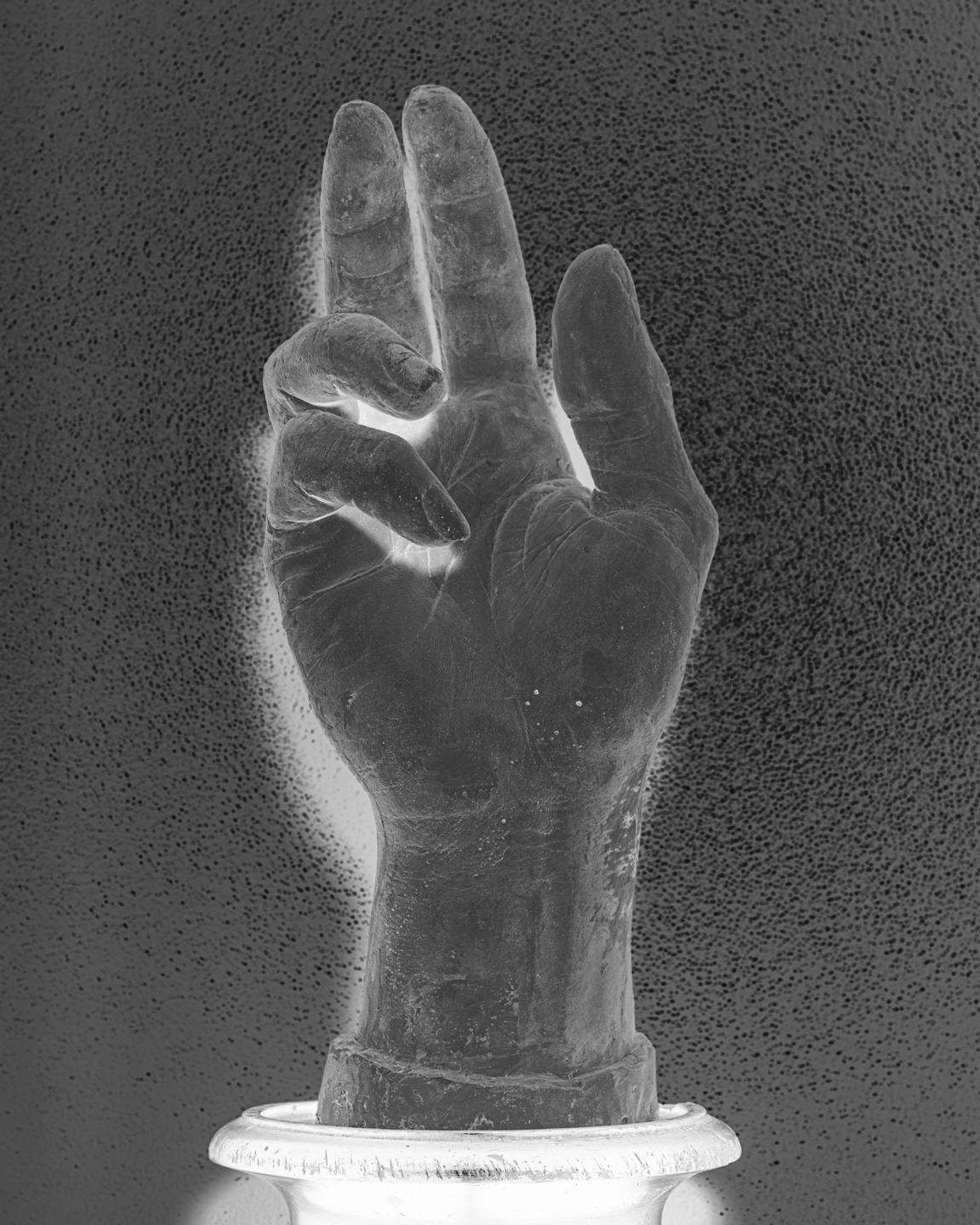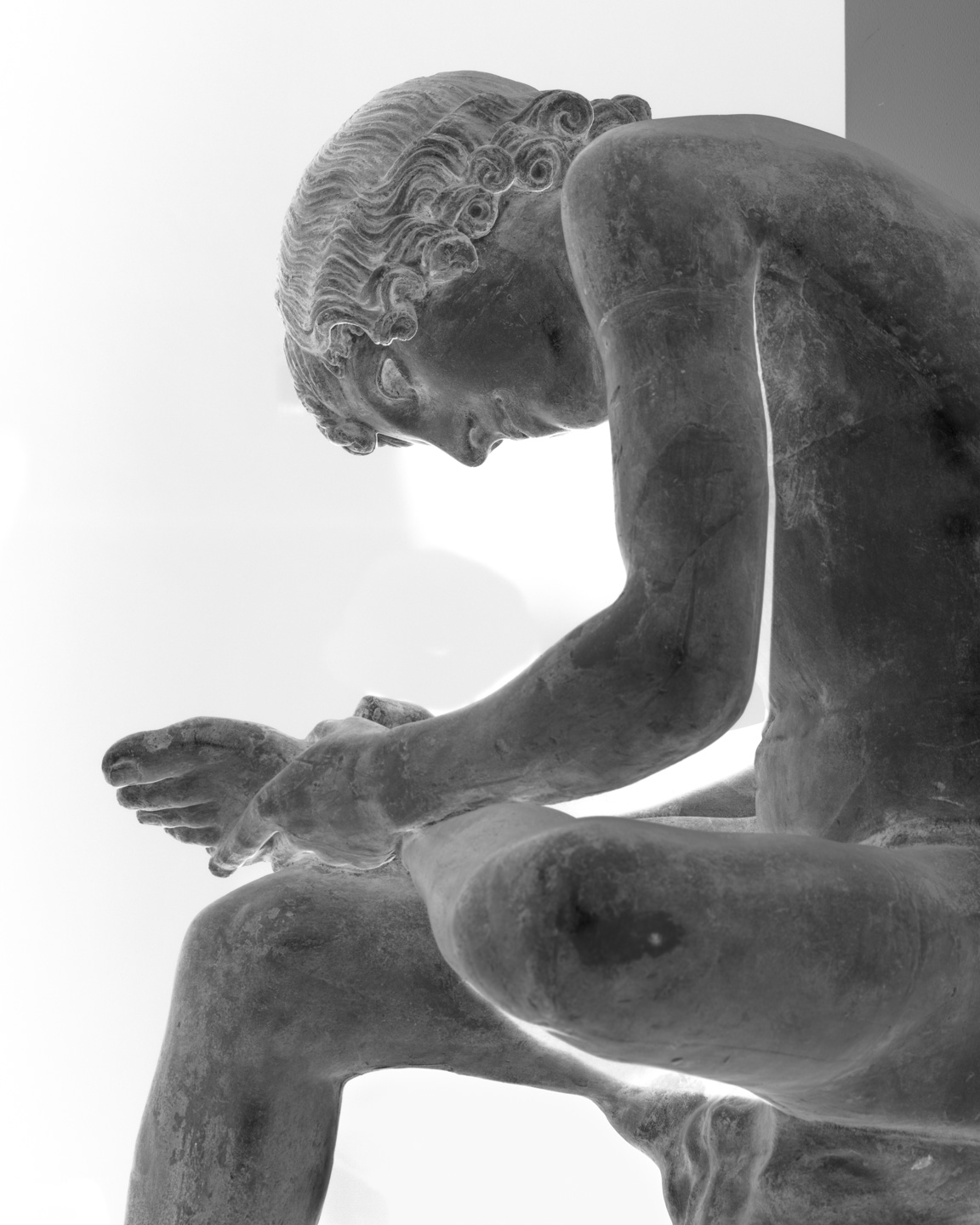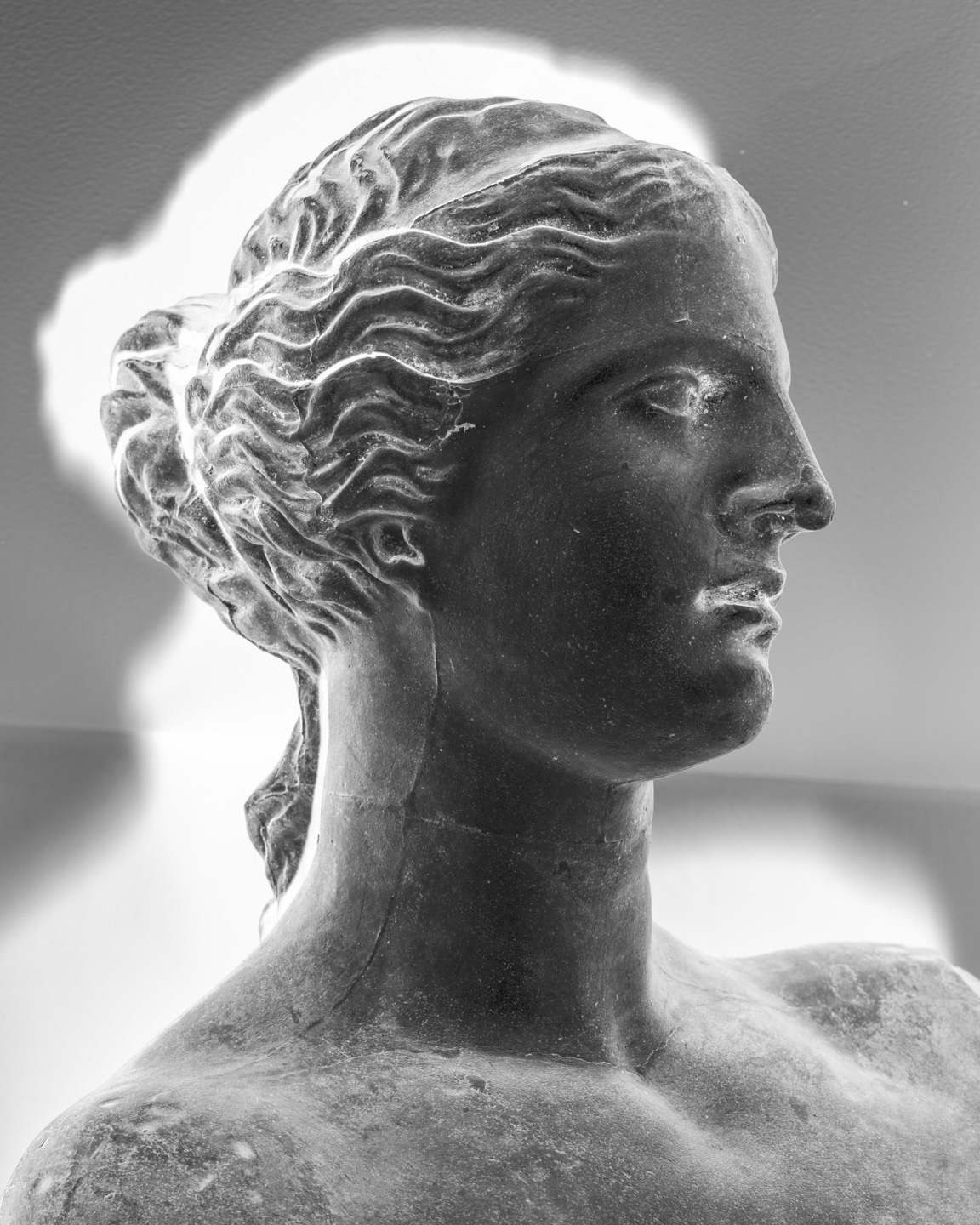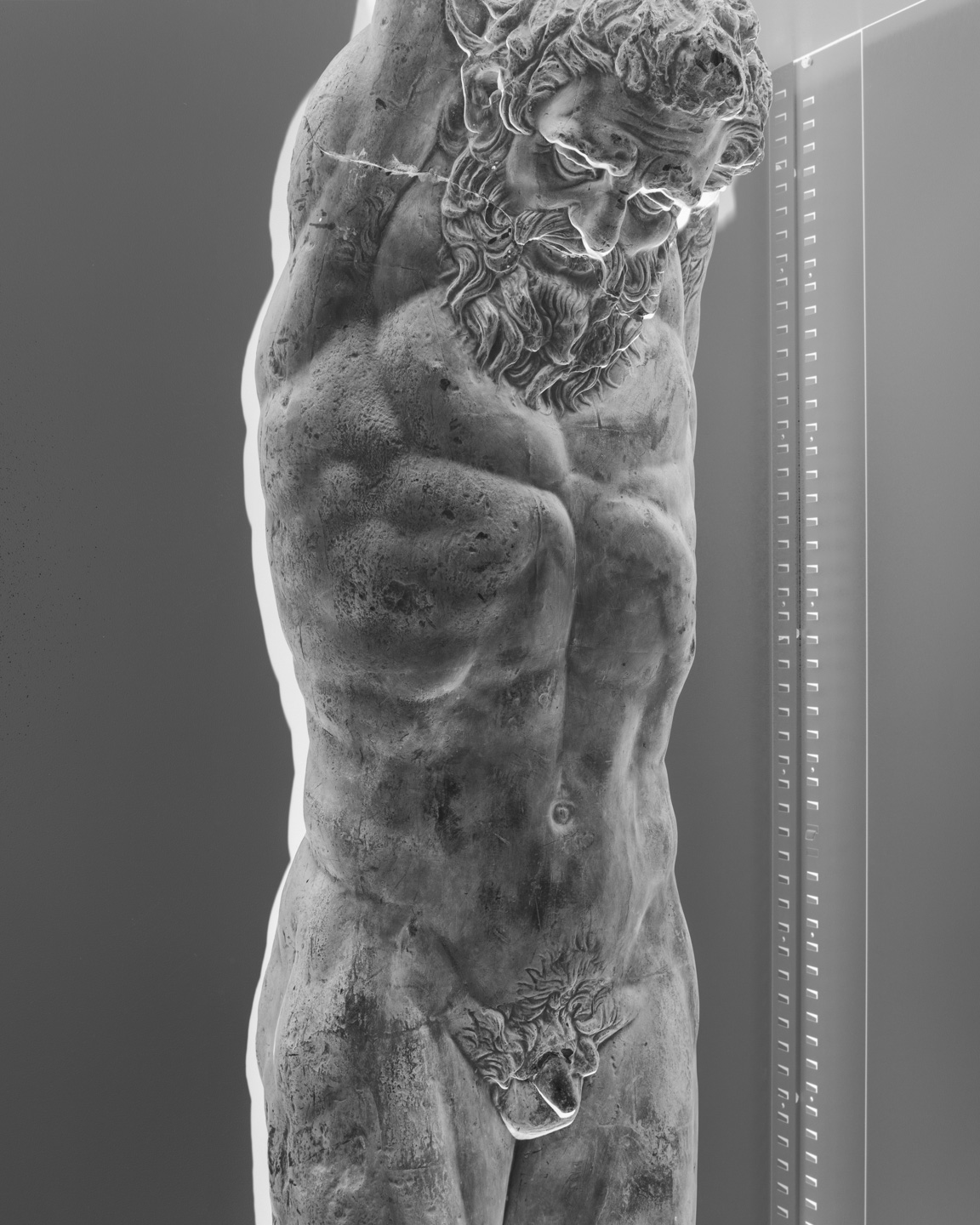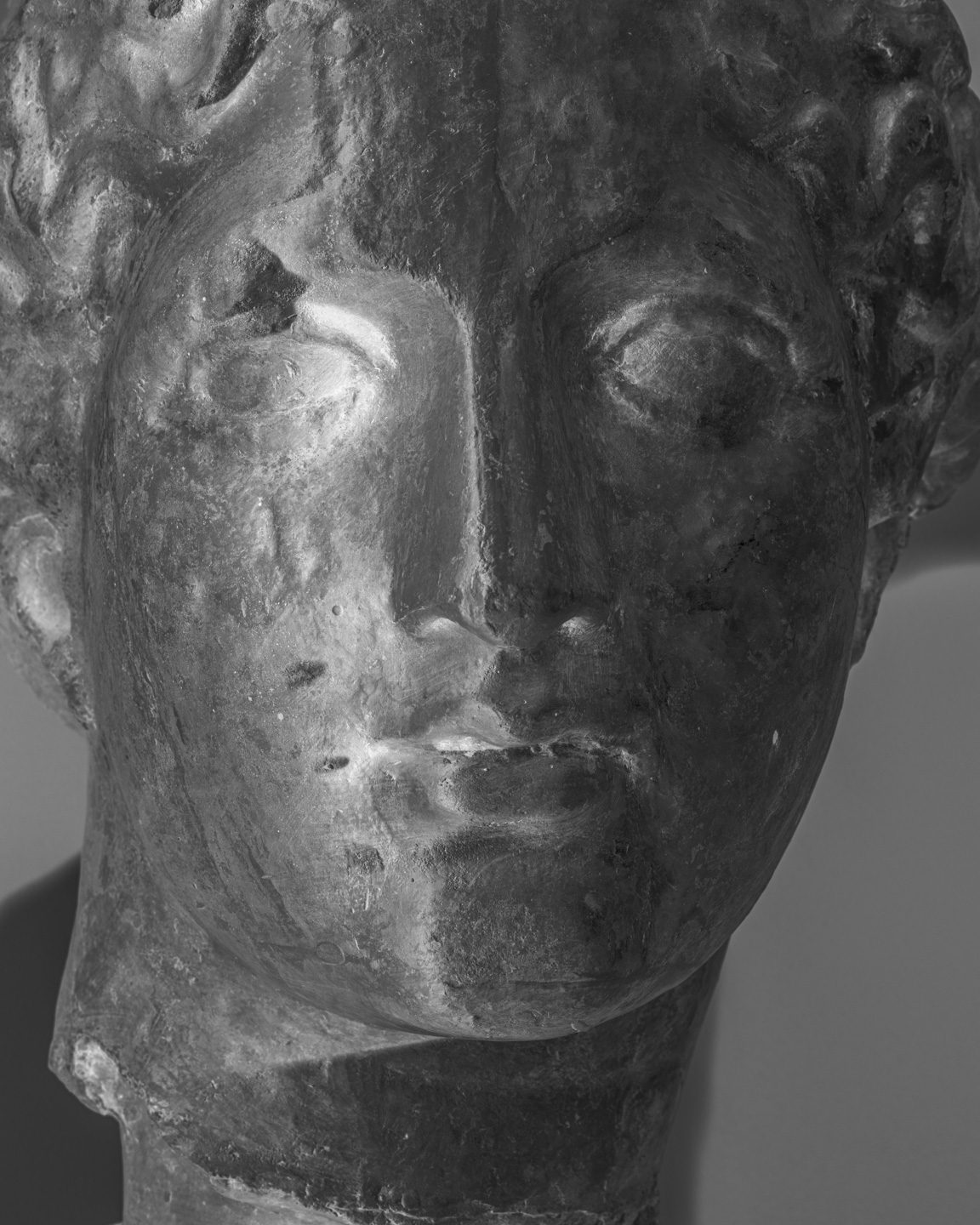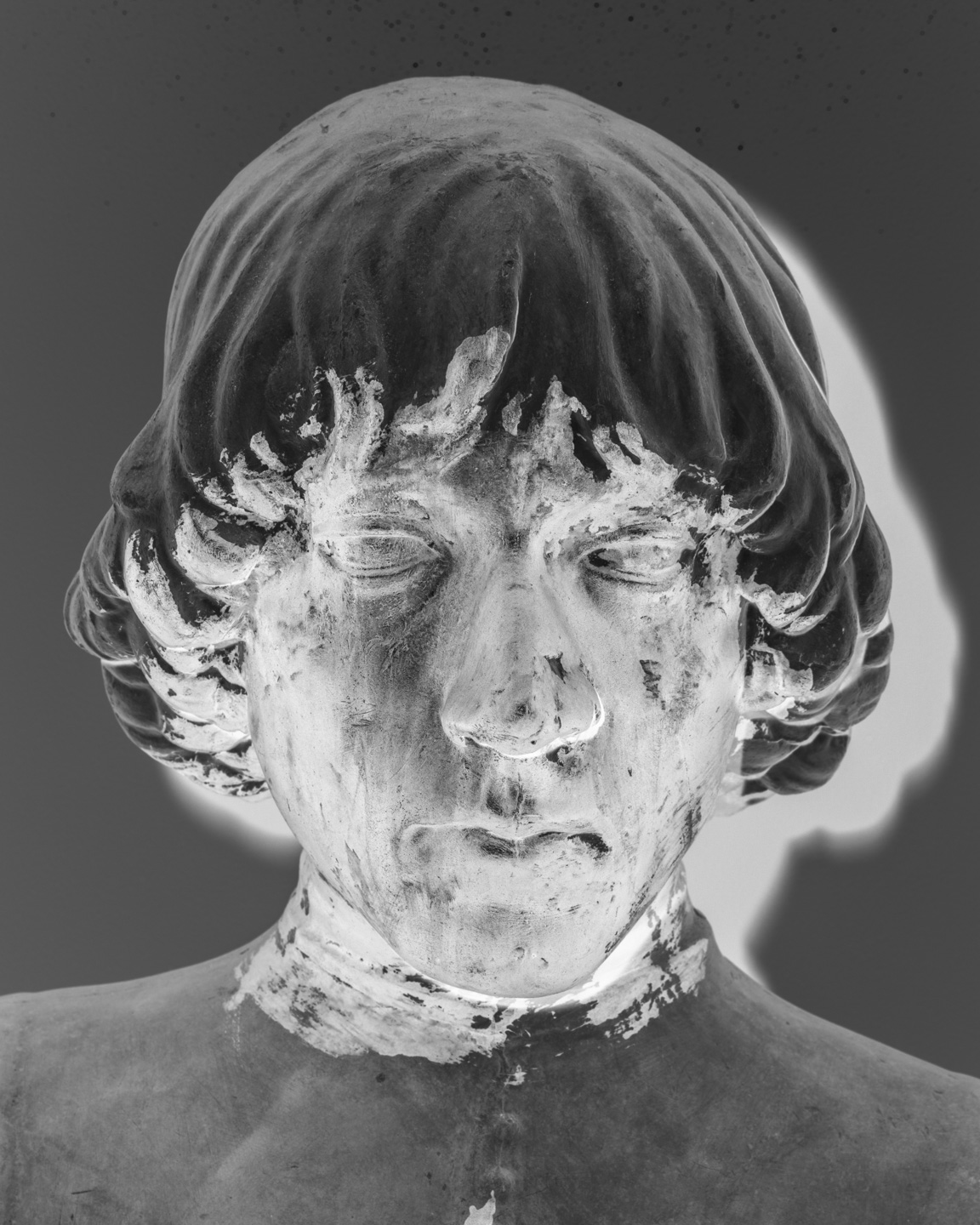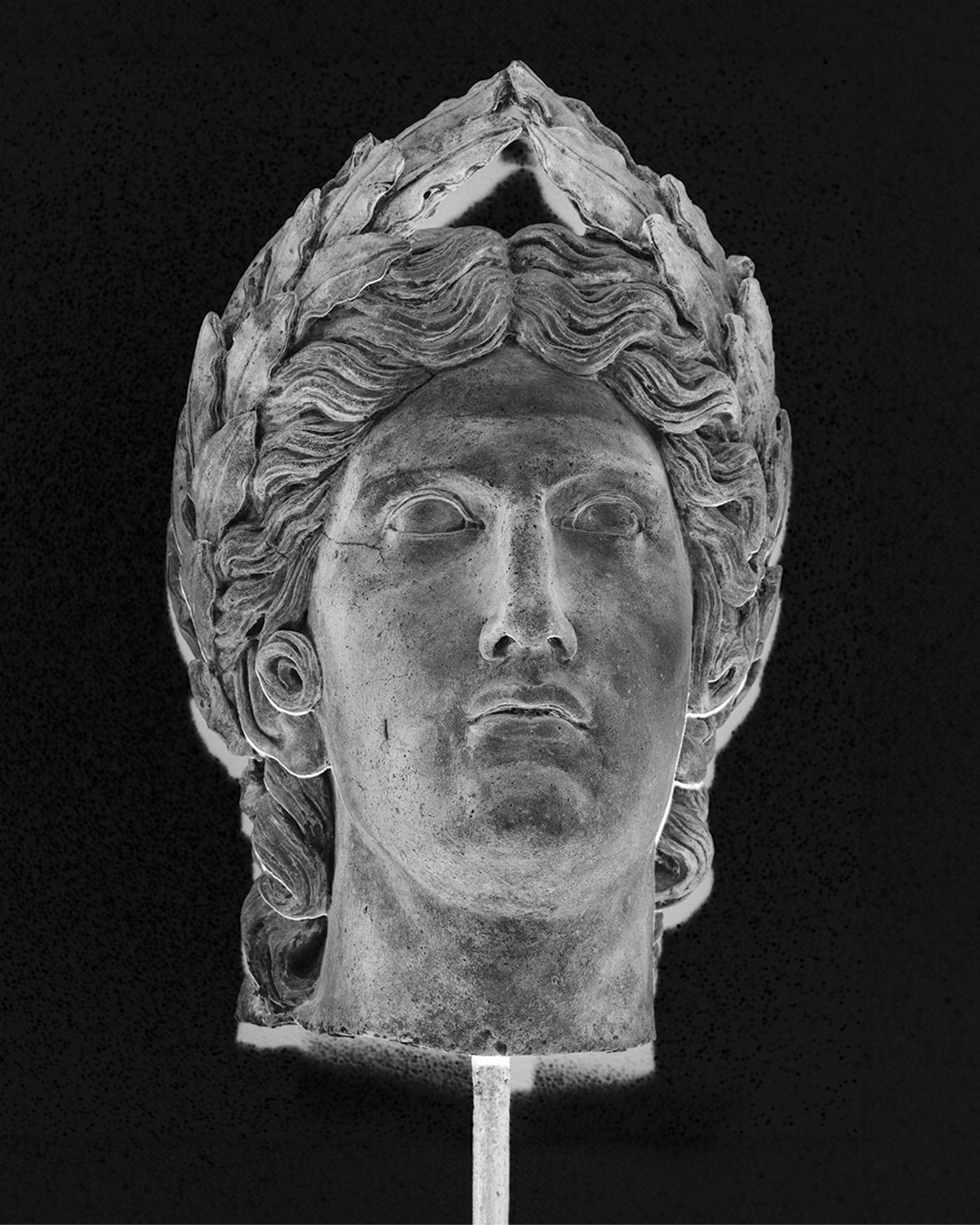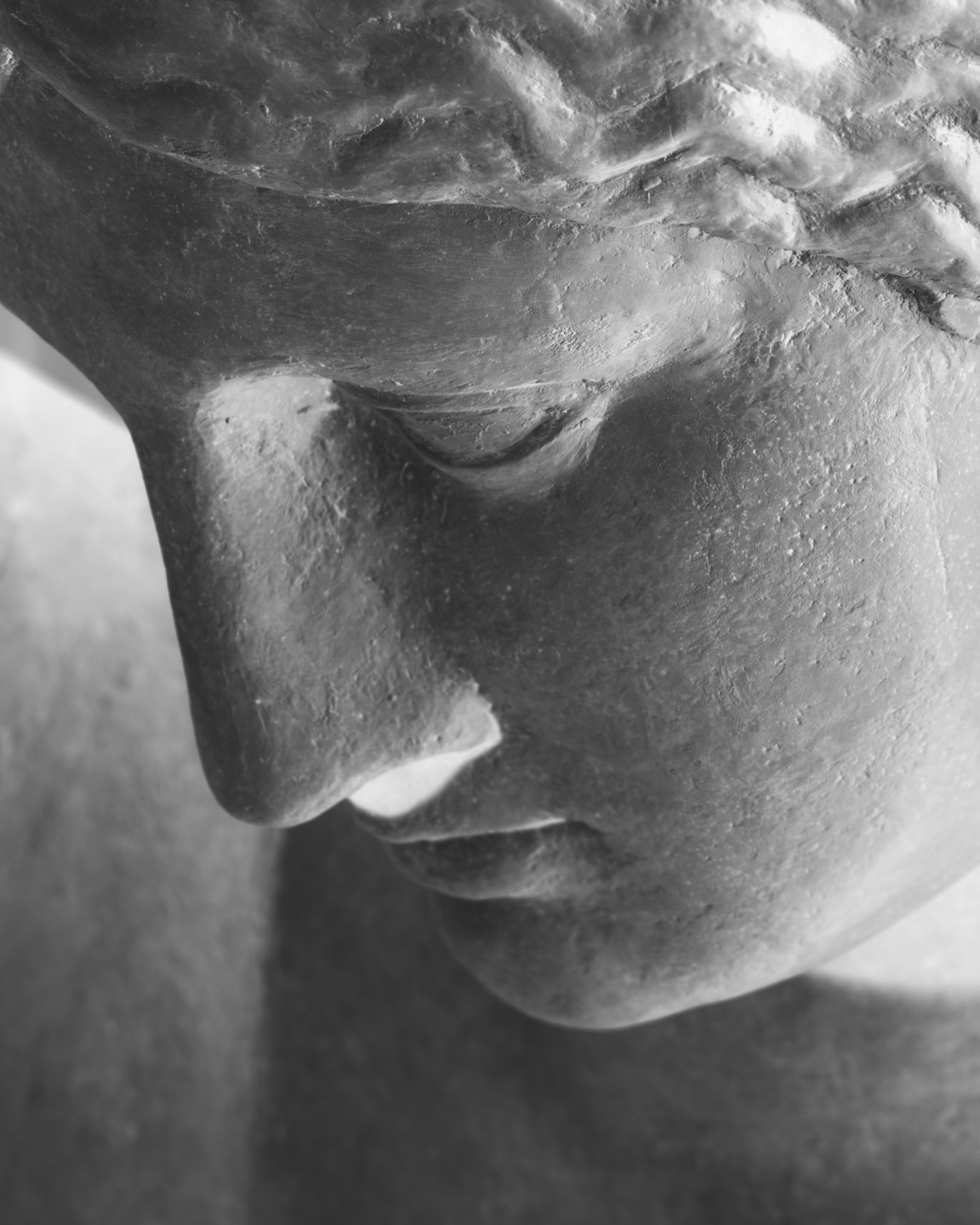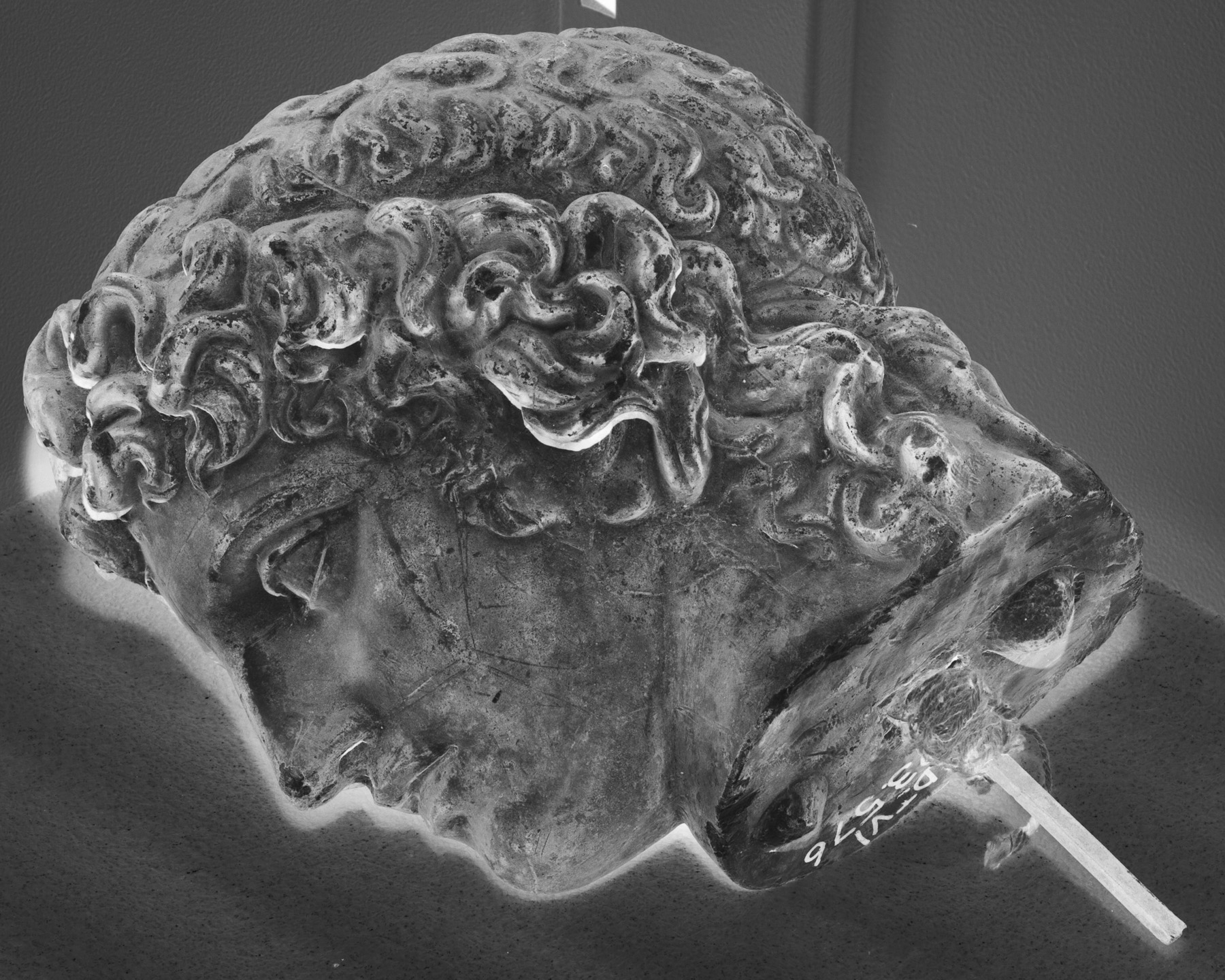2021 – em andamento
Impressão jato de tinta montada em metacrilato
Tamanhos diversos
A série Gessos é composta por fotografias de reproduções em gesso de esculturas clássicas que fazem parte do acervo do Museu D. João VI, que fica na Escola de Belas Artes da UFRJ.
Estes gessos eram utilizados nas aulas de escultura da Academia Imperial de Belas Artes, no século XIX. Esta instituição marcou o início da educação formal de artes no Brasil e reproduzia o modelo francês de ensino de artes e ofícios.
A criação da Academia foi resultado da chegada na corte, em 1816, do grupo de artistas franceses que ficou conhecido pelo nome de Missão Francesa, entre eles Debret e Taunay.
As fotografias deste projeto foram feitas com câmera digital e flash direto e, depois, transformadas em negativos. Pelo fato de que tanto os gessos quanto as prateleiras onde eles estão possuem tons acinzentados, as imagens resultantes do processo de inversão acabam por parecer quase normais, porém fantasmagóricas.
As ampliações finais são de grande formato e foram montadas em metacrilato o que confere luminosidade a imagem e, ao mesmo tempo, a transforma em uma espécie de espelho falho.
Esta série busca problematizar a ideia de que resolveremos nossos problemas importando modelos e olhando para o passado de outras terras.

